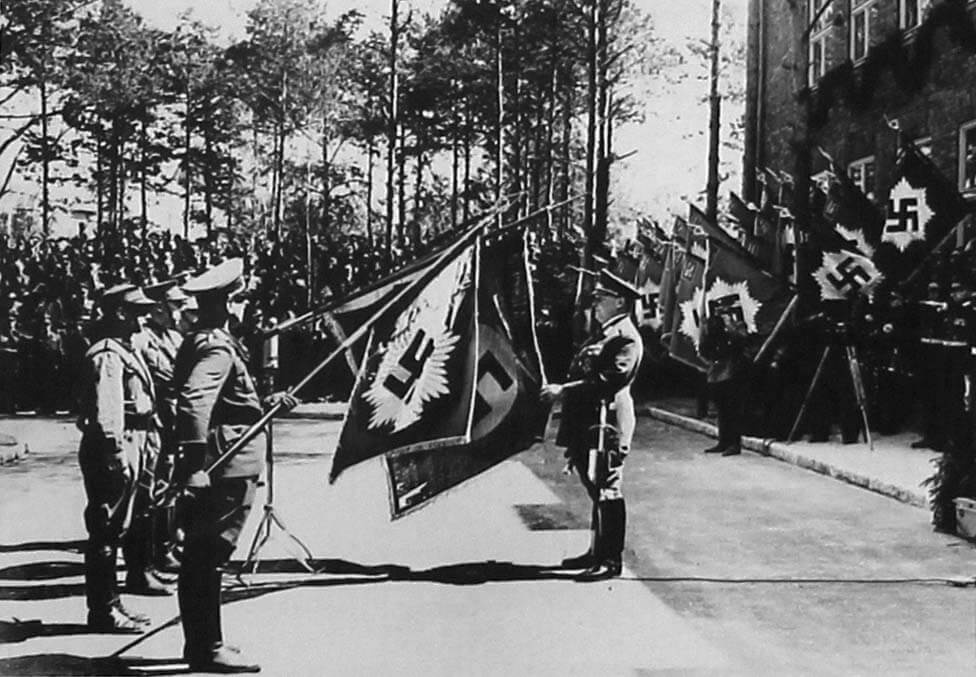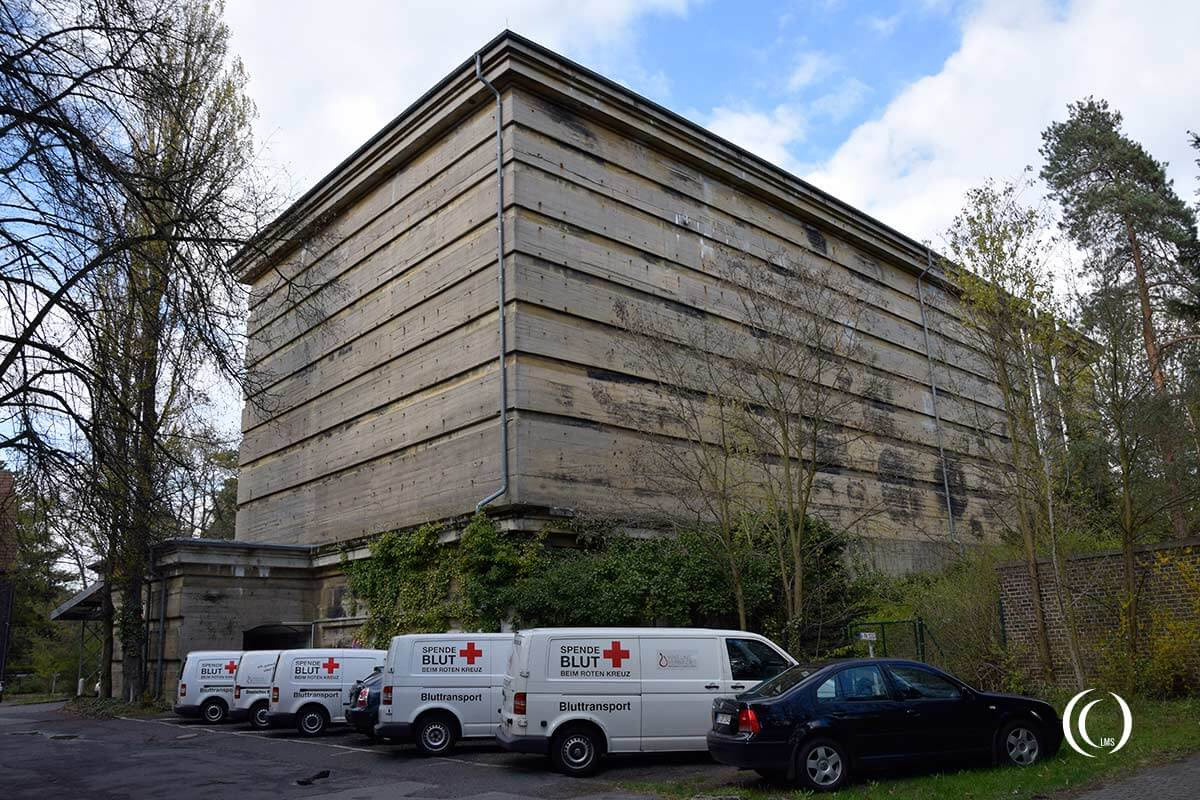Hidden in the foliage at the dead end of the curved “Am Großen Wannsee” lane lies a complex which was formerly known as the Reichs Air Raid Defense School or in German “Reichsluftschutzschule”, together with the massive “Hochbunker” Heckeshorn.

The Reichsluftschutzschule
The school complex was built between 1938 and 1939 and meant to train all German Air Raid warden personnel. To camouflage the military purpose of the complex, the layout of the many buildings resembled a civilian residential settlement. The two-storey houses for the accommodation, school and lecture halls, administration and garages were distributed across the sprawling property of 490,000 m² in loosely scattered form. The inauguration of the school in May 1939 was led by Hermann Göring himself.






The Hochbunker Heckeshorn

This enormous 25 meters high bunker dates from 1940. It was built next to the administration building and served as the central command station for the air defense of Berlin “Luftflotte Reich” and as an air raid shelter for the prominent Nazi’s who resided in the Wannsee area. With its 4 meters thick walls and roof it was the first secure bunker in the Berlin area at that time. In 1943, with the intense bombing of Berlin by the Allies, it was used by the Luftwaffe. Over a radius of 250 km the command post coordinated all air raid defenses and fighter planes. From here the air-raid sirens of Berlin were also controlled.

Shortly before the end of the war, the entire command post of the Wehrmacht stationed at Zossen-Wünsdorf was evacuated here for two days. And it was even suggested to accommodate Hitler himself.

Aftermath
The school complex survived the war undamaged and served as a hospital and research center after the war. The hochbunker was first used by the American Army during the 1948 blockade of Berlin and used as a Radio and Communication Station. It kept this function until 1967. After this it was used by the hospital.
Visit
The complex grounds are publicly admissible. It is fairly large and the buildings are spread out so be prepared for some walking.
Some buildings are in use by different organisations like the German Red Cross. Some have been emptied out years ago and are now falling into decay. The bunker is closed and only open to visitors who are willing to take a guided tour. On site there was no indication about when these tours take place. Please try “Berliner Unterwelten” for more information.